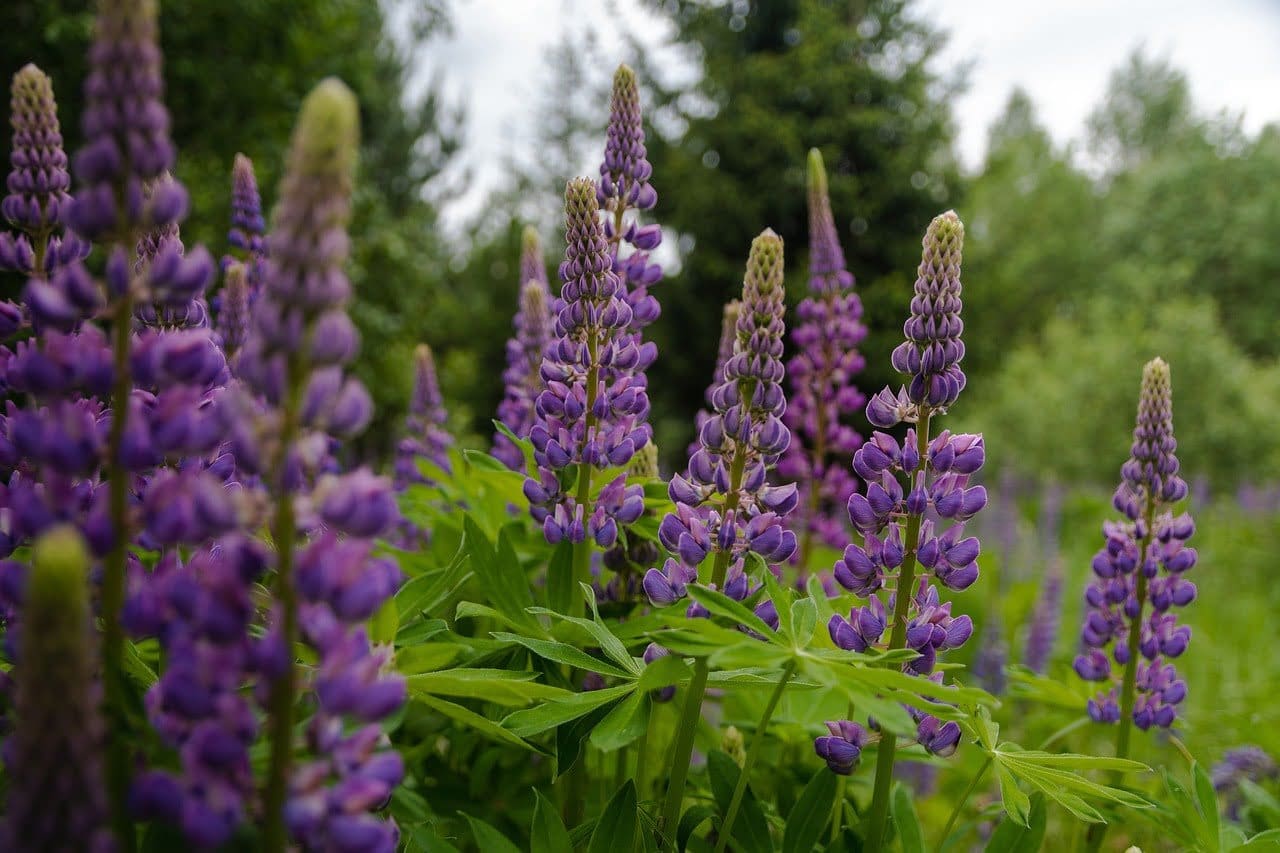Lupins are stunning flowering plants that add vibrancy and beauty to any garden. With their tall spires of densely packed flowers in shades of blue, pink, yellow, white and bi-colour, lupins provide eye-catching vertical accents wherever they are planted. Beyond their visual appeal, lupins are also nitrogen fixers, enriching the soil around them. Once established, they are hardy, low maintenance perennials that thrive with minimal care.
Growing lupins is relatively straightforward, as they are not too fussy about soil conditions and have few pest or disease issues. By choosing an appropriate variety, planting at the right time and following some basic care practices, you can enjoy the architectural elegance of lupins beautifying your garden for years to come.
You might also be interested in: Perennials for Wild Gardens
Choosing Your Lupin Variety
With dozens of lupin species and countless hybrids, there are many options to explore when selecting lupins for your garden. Consider the following factors when deciding which lupin variety is right for you:
- Size – Lupins range hugely in size, from 6-inch dwarf varieties to towering 5-foot Russell lupins. Choose a size appropriate for your garden scale.
- Growing climate – Some lupins like cool conditions while others thrive in heat. Select a variety suited to your planting zone.
- Planting purpose – For borders, mid-size hybrids around 2 feet work well. For dramatic vertical accents, tall Russell lupins make a statement.
Planting Lupins: A Step-by-Step Guide
The key to successfully establishing lupins is giving them the site conditions they prefer from the start. Here is a walkthrough of how to properly plant your lupins:
Site Selection and Soil Preparation
Lupins thrive best in full sun, where they will produce the most abundant flowers. They can tolerate partial shade but may bloom less vigorously. Select a site with at least 6 hours of direct sunlight per day.
The ideal soil for lupins is slightly acidic, well-draining and nutrient-poor. Improve dense, heavy soils by mixing in coarse sand or small gravel to improve drainage. You can also work in peat moss or composted pine bark to increase acidity.
Soil should be moist but never waterlogged. Check for drainage issues and amend soil if puddling occurs. Remove weeds which will compete with young lupin roots.
Growing Lupins from Seeds
For a wider selection of varieties, planting from seed is a great option. Follow these steps:
- Scarify seeds by nicking seed coats with a file. This mimics natural weathering and boosts germination.
- Soak scarified seeds in room temperature water for 24 hours before planting.
- Sow seeds 1⁄4 inch deep in pots or trays, 2-3 seeds per pot. Use a sterile seed starting mix.
- Place containers in a sunny spot and maintain even moisture. Expect germination in 10-25 days.
- When seedlings have 4 true leaves, transplant into garden 18-24 inches apart. Harden off gradually.
For a more detailed guide, check out: How to Grow Lupins From Seed
Planting Lupins from Seedlings
For instant impact, established lupin seedlings can be planted in spring or fall. Follow this process:
- Dig holes for seedlings twice as wide and just as deep as the root ball. Space 18-24 inches apart.
- Carefully place seedlings in holes without handling stems. Lupins resent root disturbance.
- Backfill holes with surrounding soil, gently firming soil around roots.
- Water thoroughly after planting and as needed until established.
Caring for Your Lupin Plants
A little attentive care will keep your lupins thriving year after year. Follow these tips for healthy, vigorous specimens:
Watering and Fertilization Requirements
Lupins prefer consistently moist, well-drained soil. Allow the top few inches of soil to dry between waterings, then soak thoroughly. Drought stress can cause flower loss or leaf scorch.
Fertilize lupins every 4-6 weeks during the growing season with a low-nitrogen, phosphorus-rich fertilizer. Phosphorus promotes abundant blooming while excess nitrogen causes weak, floppy growth.
Staking Tall Lupin Varieties
Columns of towering Russell lupins and other tall hybrids will need staking to prevent collapse under their own weight. Install stakes when plants are around 1 foot tall.
Use bamboo canes or metal stakes paired with fabric ties. Place stakes 6-12 inches from stems to allow some natural movement. Stake before plants become top heavy.
Deadheading and Pest Control
Remove spent flower spikes regularly by snapping or cutting them off just above a leaf node. This tidies plants and encourages more blooms.
Monitor for aphids, slugs or whitefly which may infest plants. Treat with horticultural soap or neem oil sprays. Practice crop rotation and remove debris to prevent issues.
Frequently Asked Questions About Growing Lupins
Q. When is the best time to plant lupins?
Lupins can be planted in spring once the danger of frost has passed, or in fall in zones 4-7. Fall planting gives roots time to establish before flowering.
Q. How often do I need to water my lupins?
Check soil moisture regularly, watering whenever the top few inches become dry. Provide a thorough soaking rather than frequent light sprinkles.
Q. What is the best fertilizer for lupins?
Choose a low-nitrogen, phosphorus-rich formula, such as a 5-20-5 or 5-10-10 fertilizer, to promote lush blooms. Apply every 4-6 weeks per product instructions.
Q. How do I prevent my lupins from flopping over?
Select sturdy, compact varieties under 3 feet tall. Stake taller varieties while young and prune back overgrown stems. Limit nitrogen fertilizer to prevent weak growth.
Q. What are some of the most popular lupin varieties?
Russell lupins, Gallery lupins, Minarette, Chandelier and My Castle lupins are popular for their vibrant colours and ability to thrive in many climates.
Final thoughts
With their refined beauty and graceful charm, lupins are captivating additions to gardens across a wide region. By selecting varieties suited to your climate, providing optimal growing conditions and applying proper care, you can successfully grow lupins from seeds or seedlings. Their whimsical spires and fabulous colours will give you joy for seasons to come.
Experiment with different lupin varieties to find your favourites – be they bold Russell lupins or dainty dwarf types. Properly planted and cared for, lupins will enrich your garden with their elegance year after year.







